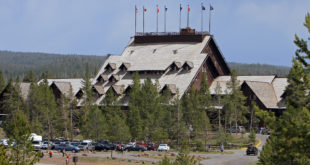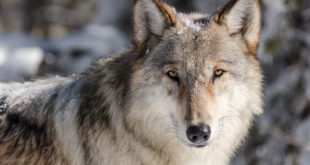Yellowstone National Park biologists suggest a drop in the wolf population is due to a return of distemper in the packs.
Out of the 11 Yellowstone packs, three have no pups, with several more showing a reduced number. In addition, the adult mortality rate seems to be higher than normal, leading Doug Smith, Yellowstone’s lead wolf biologist, to suspect the first outbreak of distemper since 2005.
“It seems like 1999 and 2005, when we documented distemper,” Smith told the Billings Gazette. “But that’s unconfirmed until we catch wolves this winter, draw blood and look for antibodies.”
Couple the potential outbreak of distemper with a delisting of wolves as an endangered species, and the packs may take an even bigger hit this winter than normal. Currently the Park wolf population is pegged at 145 wolves, but Smith warns this is likely not accurate; the more accurate counts come during the winter when the wolves are easier to spot. The more accurate measurement, it would appear, is around 170 or wolves.
In addition, there’s one more stat that should cause concern: the outbreak cycle. Distemper first broke out in 1999 and then again in 2005, a six-year gap. But we’re now three years past 2005, and if the cycle is actually accelerated — as opposed to this year’s outbreak potentially being an aberration — then the Park biologists will have a busier time tracking outbreaks and implementing any needed management strategies.
Still, distemper is part of the natural cycle; it’s a disease that is not uncommon and can be found in coyotes and dogs as well. Since it’s found in saliva, a wolf can contract it through a fight with another predator or scavenger (like a wolf) or by eating at a carcass already picked over by an infected animal. It does prey on the weak, and wolves can build up resistance.
 Yellowstone Insider Your Complete Guide to America's First National Park
Yellowstone Insider Your Complete Guide to America's First National Park





